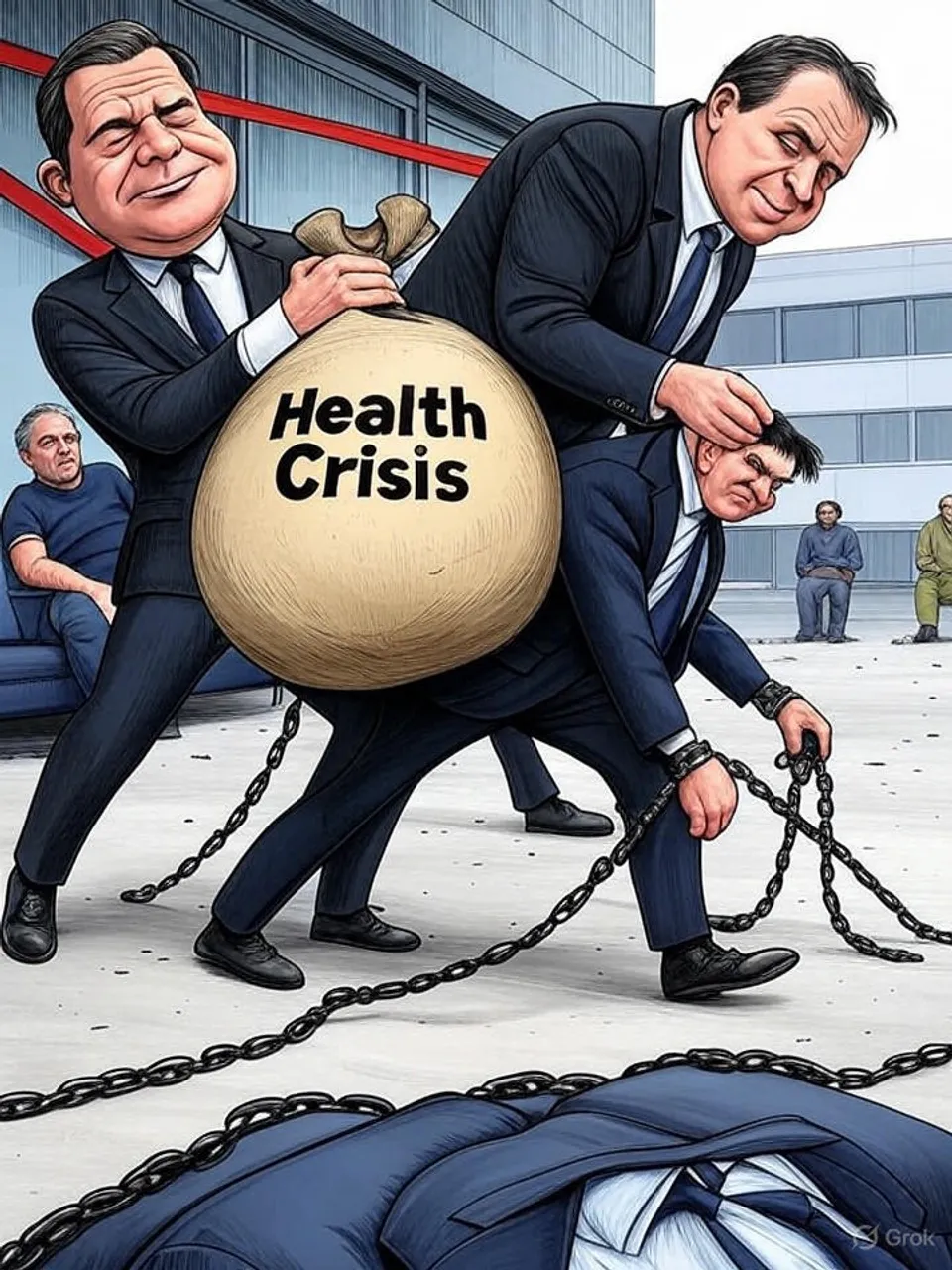Nine Million Sidelined: Employers Charged with State's Health Failures

£85 Billion Annual Toll from Record Inactivity Pushes Costs onto Private Sector
A government review demands £6 billion yearly from employers to combat health-driven worklessness, exposing NHS breakdowns and cross-party neglect that leave 9 million working-age adults economically inactive.
Commentary Based On
The Guardian
Fixing Britain’s worklessness crisis will cost employers £6bn a year, report says
Nine million working-age adults sit economically inactive in Britain, a figure that includes 3 million sidelined by long-term sickness—the highest on record. Ministers express alarm at this surge, particularly among young people, yet the government’s response funnels the burden onto employers through a proposed £6 billion annual spend on workplace health support. This approach sidesteps the underlying decay in public health services that drives the crisis.
The Keep Britain Working review, led by former John Lewis chair Charlie Mayfield, quantifies the economic toll at £85 billion yearly. Lost output, ballooning welfare costs, and NHS strains compound the damage. For context, this inactivity rate—one in five working-age adults—has climbed steadily since the 2010s, outpacing pre-pandemic levels despite repeated cross-party pledges to boost employment.
Young adults fuel much of the rise, with 1 million under 25 neither working nor training. Data from the Office for National Statistics shows long-term sickness claims spiked 40% since 2019, linked to mental health issues and chronic conditions untreated by overburdened GPs. Governments from both parties have cut occupational health funding in the public sector while privatizing elements, leaving gaps that now demand private sector intervention.
Mayfield’s report calls for a “fundamental reset,” shifting health management from individuals and the NHS to a tripartite model involving employers. Businesses would fund expanded occupational health at £5-15 per employee monthly, potentially certified by government and integrated with NHS apps. This envisions replacing GP-issued fit notes, but it assumes firms can absorb costs amid Rachel Reeves’ recent £25 billion employer national insurance hike.
Over 60 major employers, from Tesco to British Airways, commit to a three-year vanguard program. Smaller businesses and regional mayors join, aiming to test proactive health measures. Yet business groups already protest Labour’s employment policies as hiring barriers, warning against further tax squeezes in the upcoming budget.
The report projects £18 billion in annual economic gains if scaled, through reduced sickness absence and higher disability employment. Historical comparisons reveal stagnation: disability employment hovered at 50% for a decade before 2020, far below OECD averages, as austerity-era cuts eroded preventive care. No administration since 1997 has reversed this trend, with each layering on welfare expansions without structural fixes.
This setup exposes accountability voids. Public health spending rose 20% in real terms since 2010, yet outcomes worsened, per King’s Fund analysis, due to workforce shortages and siloed services. Governments offload fixes to employers, who face no mandate but voluntary incentives like tax rebates—promises that prior reviews, such as the 2017 Taylor report on low pay, largely ignored.
Ordinary citizens bear the fallout. Economically inactive individuals lose £10,000 in annual earnings on average, per Resolution Foundation data, trapping families in poverty cycles. Businesses pass costs via higher prices or wage stagnation, while taxpayers fund £20 billion yearly in health-related benefits. The crisis persists because policy treats symptoms—worklessness—without addressing causes like NHS waiting lists exceeding 7.6 million.
Systemic patterns confirm the decline. Cross-government failures in integrating health and employment services repeat: Blair’s welfare reforms emphasized conditionality without health investment; Cameron’s austerity slashed public sector jobs; Johnson’s pandemic response accelerated inactivity without follow-through. Employers now subsidize state shortcomings, a private bailout for public neglect.
Britain’s worklessness epidemic underscores institutional rot. Governments proclaim economic recovery while 9 million idle adults signal labor market collapse. Shifting £6 billion onto businesses masks the truth: without overhauling the NHS and welfare silos, this “quiet crisis” entrenches decline, costing the nation far more than any employer levy.
Commentary based on Fixing Britain’s worklessness crisis will cost employers £6bn a year, report says by Richard Partington on The Guardian.